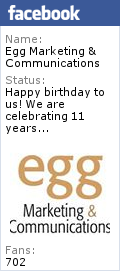When it comes to creating a brand, or expanding an established brand, nothing today is more important than a thriving digital presence. Most of the key marketing elements for business success — including customer retention, new customer acquisition and expanding the reach of revenue-generating activities — depend on a strategy that embraces the Internet’s full potential.
Yet with so many digital and media channels to choose from, how does a small business determine the most effective venue in which to pursue this strategy?
The answer lies in the effective integration of those channels and platforms to contribute to a successful brand strategy. “Integration” involves more than simply coordinating different, silo-based marketing efforts. The process, says marketing communications specialist Saman Mansourpour, “means offering tailored brand experiences at every customer touch-point, and this is what causes marketers the biggest headache.”
Here are five key points to keep in mind when developing your digitally integrated brand strategy:
1. Know what your audience wants.
Having only a vague sense of your customers’ “digital footprint” won’t help you form a precise strategy for reaching them in an impactful way. Collect and scrutinize historical and real-time information to evaluate which channels are utilized most by various segments of your target audience.
2. Create a plan with measurable goals.
You can’t assess how well your campaign succeeds without a set of measurable goals. Your integrated, brand-building plan should focus on obvious ROI elements such as sales and customer engagement, as well as a comparison of how well different channels perform over time.
3. Work from one big idea.
One error common to small-business marketing efforts is the attempt to promote a variety of messages and themes in the hopes that one or two will find the desired traction among customers.
A more effective approach is working from what marketing specialist Dallas Geerlings calls “one big idea.” She recommends regarding your campaign “as a story your brand is trying to tell, and your multi-channel initiatives are all chapters of that same story.” The messages conveyed by different initiatives don’t have to be identical — in fact, they shouldn’t be — “but each facet should direct back to the same theme.”
4. Provide genuinely valuable content.
An effective integrated campaign utilizes fresh content designed to forge a connection with the target audience. Avoid creating blog posts, case studies, articles, etc. that are overtly promotional in nature; today’s sophisticated consumers know hype when they see it, and will likely regard future communications from your business as suspect if it seems thin on substance.
Instead, strive to offer content that is both informative and engaging. You are the subject-matter expert in your particular field, and part of building a brand across different channels is establishing a reputation for providing valuable content. The key is developing content that can be repurposed across different channels while consistently delivering value wherever it appears.
Operations Manager Laura Miller at Zazzle Media encourages businesses to “push the boundaries of your brand and voice,” as long as it doesn’t “confuse the consumer.” Seek opportunities for “taking a unique aspect of the brand and tying it to a consumer insight that is powerful and engaging,” Miller adds, whether it appears as a Tweet, Facebook ad or a content-rich “how-to” blog post.
5. Have a consistent look and feel.
How your brand messaging comes across is critically important in terms of supporting the content you provide. Whatever channels you pursue, make sure the message has “a common overarching design,” says webmaster Basit Javed, including the consistent use of graphics, images, logos and fonts. “A person reading an e-newsletter or brochure should see an immediate connection when visiting the website,” Javed says.
For digital integration to truly work, it’s necessary to move beyond a silo mentality where different departments — or different marketing agencies — work on different aspects of the same campaign. Either hold regular meetings to ensure everyone’s efforts are consistent, or appoint a knowledgeable in-house person to monitor and coordinate activities aimed at maintaining a clearly identifiable brand voice across channels.
Image: Photospin
Author Bio:
Claire Holland is the Director of Marketing Communications at agencyEA, a brand experience agency specializing in experiential, digital and traditional engagement in Chicago. She guides the strategic vision of the company’s brand, messaging and voice, while supporting and evolving digital programs for clients. Holland also oversees all of agencyEA’s internal and external marketing communications, including digital marketing and public relations.


